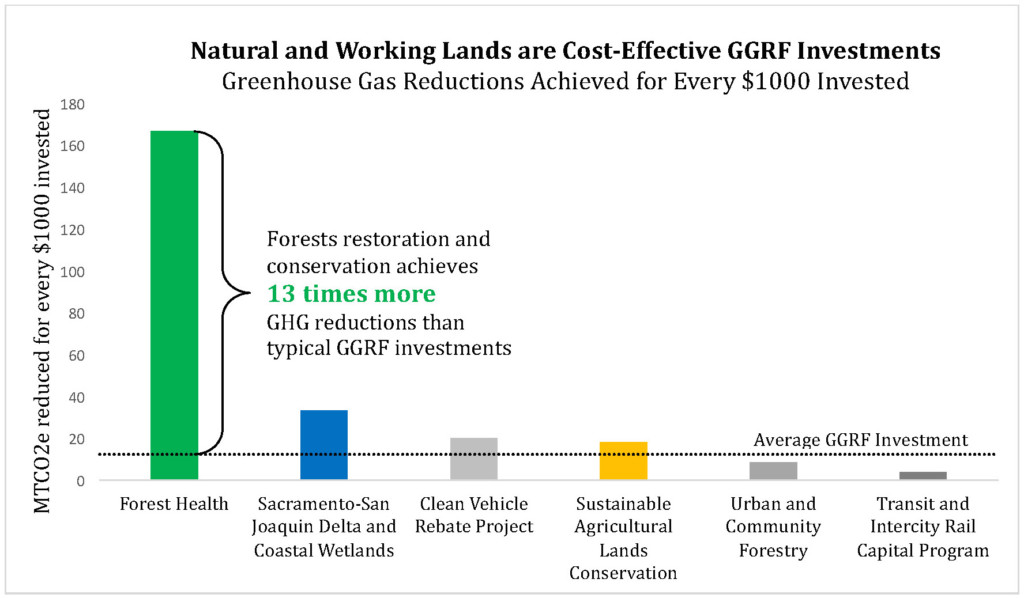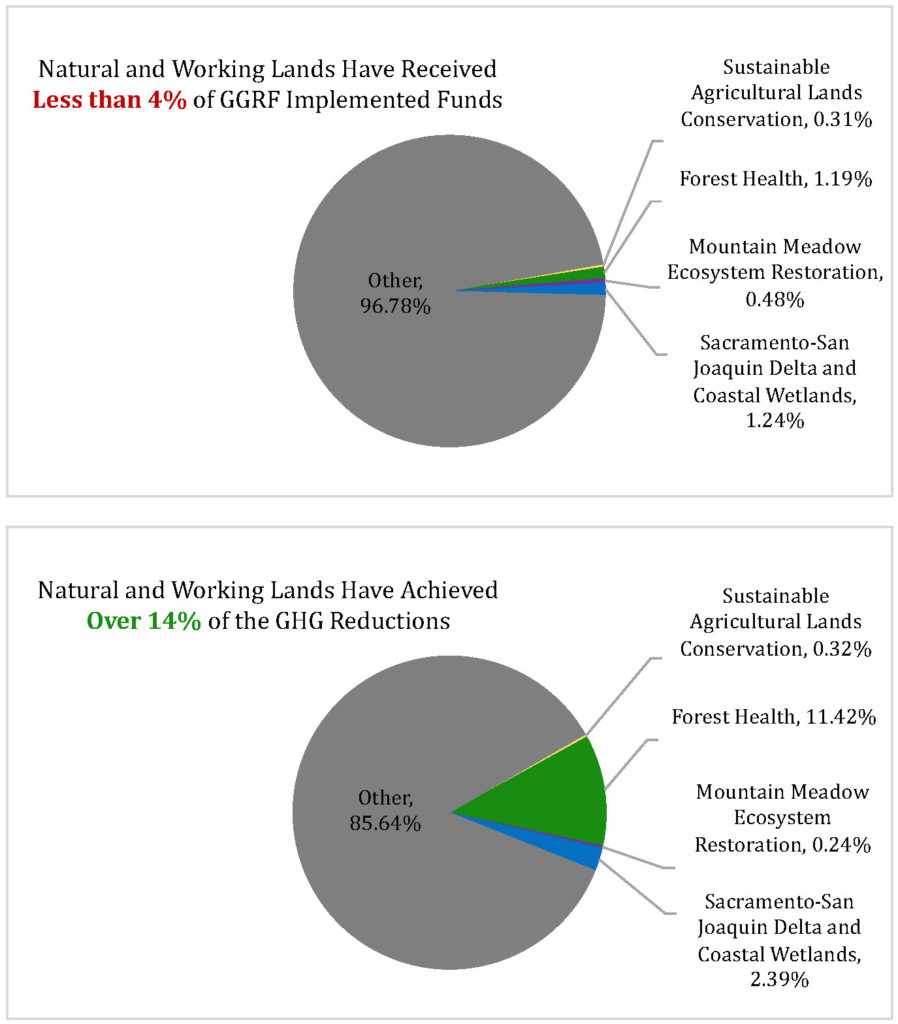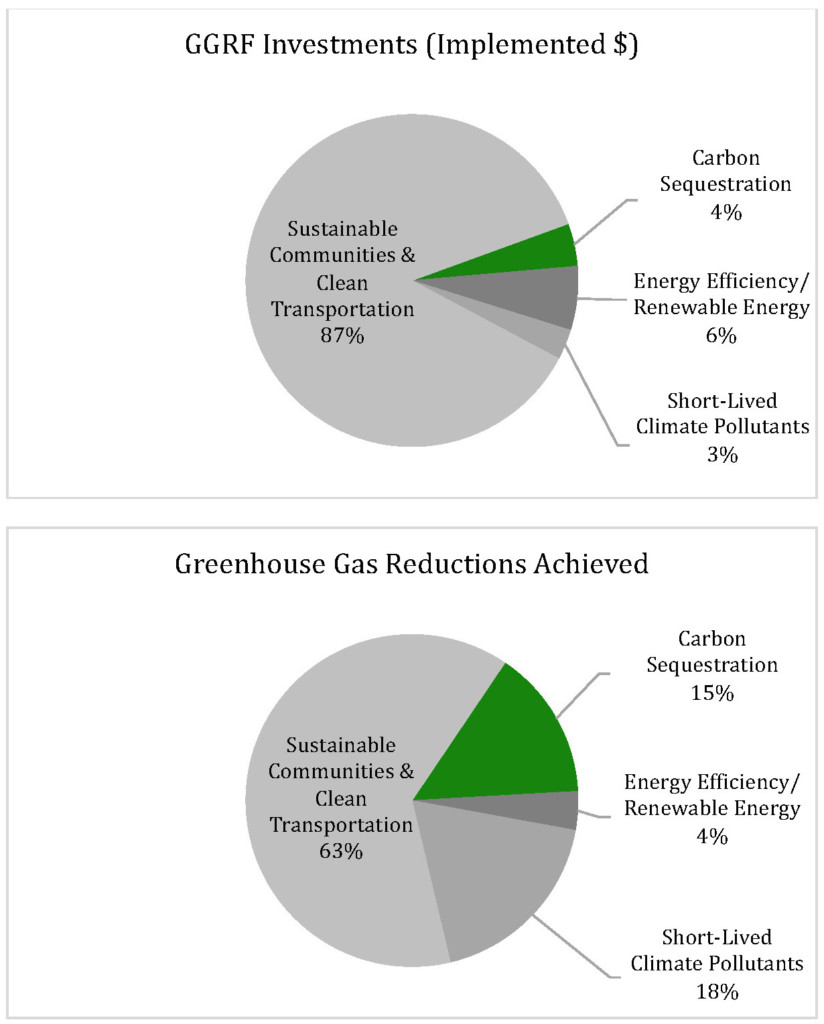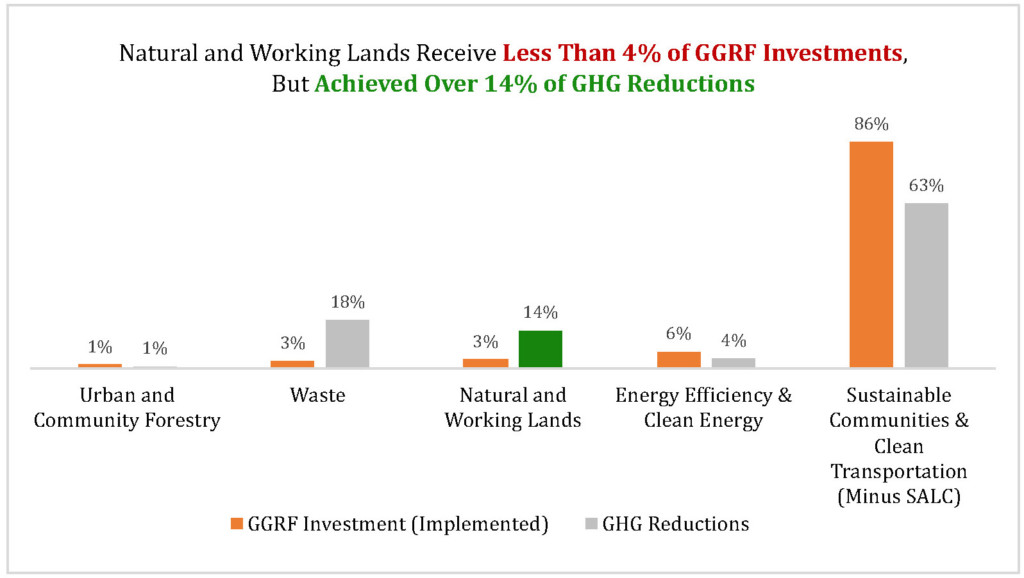GGRF Investments in Natural and Working Lands
With the recent passage of AB 398 that extended California’s cap-and-trade program through 2030, California legislators will now be considering how to allocate the funds raised from this year’s auction. Pacific Forest Trust sent the letter below urging the Assembly Budget Subcommittee 3 to invest more of the Greenhouse Gas Reduction Fund (GGRF) in natural and working lands, which have achieved over 14% of the Greenhouse Gas (GHG) reductions despite receiving less than 4% of the implemented funds.
August 7, 2017
Re: GGRF Investments in Natural and Working Lands
Dear Assembly Member Bloom and Members of Assembly Budget Subcommittee 3,
We urge you to increase GGRF investments in forests and other lands. These are some of the most cost-effective GGRF investments for reducing greenhouse gases (GHGs) as they are capable of taking carbon out of the atmosphere. For instance, forests can achieve 13 times the GHG reductions per dollar of the average GGRF investment. However, natural and working lands have received less than 4% of the GGRF investment to date. This represents a missed opportunity, as these areas not only sequester immense amounts of carbon, but also provide irreplaceable habitat for wildlife and are the source of much of our water supply.
Investments in forests and other lands are essential to prepare for climate change. The recent tree mortality event in the Sierra is a shocking example, but is a symptom of stress and degradation that afflicts forests throughout the state. We need investments that proactively restore and conserve our forests so they are resilient stores of carbon that provide numerous public benefits, rather than a tinderbox and public health hazard.
The graphs below, based on data from ARB’s Cap and Trade Auction Proceeds 2017 Annual Report, illustrate how GGRF investments in forests and other lands can achieve disproportionate GHG reductions, at a fraction of the cost of other investments.
We appreciate your thoughtful attention to California’s climate investments and urge an increased focus on investments in natural lands that reduce GHGs while also helping us prepare for our future climate conditions. Please don’t hesitate to contact me if we can be of any further assistance.
Sincerely,
Paul Mason
V.P., Policy & Incentives
Source for all graphs: Air Resources Board, 2017. California Climate Investments Using Cap-and-Trade Auction Proceeds, 2017 Annual Report. Available at: http://arb.ca.gov/cc/capandtrade/auctionproceeds/cci_annual_report_2017.pdf




